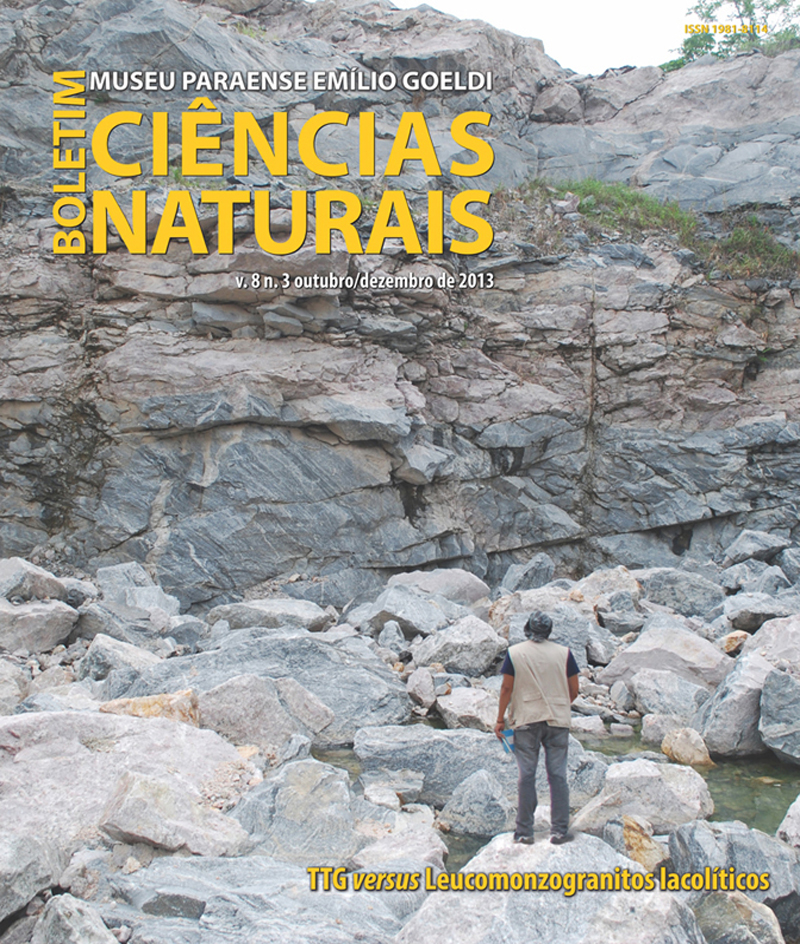Archean granitoids of the Água Azul do Norte region, Carajás Province, southeast of Pará State: petrography, geochemistry and geochronology
DOI:
https://doi.org/10.46357/bcnaturais.v8i3.553Keywords:
Carajás Province, Granodiorites, Trondhjemites, Petrography, GeochemistryAbstract
Archean granitoids outcropping between Água Azul do Norte and Ourilândia do Norte cities, NW portion of the Rio Maria Granite-Greenstone Terrain, Carajás Province, were grouped into granodioritic and trondhjemitic associations. The granodioritic rocks are constituted of: 1) amphibole-biotite granodiorite strongly saussuritized, with crystallization age of 2875 ± 2 Ma, mafic contents between 16 and 21%, high contents of Ni, Cr and Mg, continuum pattern of fractionating rare earth elements and absence of significant Eu negative anomaly, resembling petrographic, geochemical and geochronologically the rocks of the Rio Maria Sanukitoid Suite; 2) less altered biotite granodiorite with crystallization age of 2884 ± 3 Ma and total mafic ranging from 8-15%, comparatively more enriched in rare earth elements with pronounced negative Eu anomalies, differing petrographic and geochemically from previous rocks; 3) leucogranodiorites – whitish to pinkish granites, containing phenocrysts of plagioclase and alkali feldspar, correlated to rocks of the Guarantã Suite. Trondhjemites are represented by biotite-epidote trondhjemites, with biotite and epidote as the main magmatic phases, high La/Yb, Sr/Y and Nb/Ta ratios and strong similarities with the rocks of the Mogno Trondhjemite.
Downloads
Published
Issue
Section
License
Publication means fully assigning and transferring all copyrights of the manuscript to the journal. The Liability Statement and
Assignment of Copyrights will be enclosed with the notice of acceptance. All the authors must sign the document and return it to the journal.






